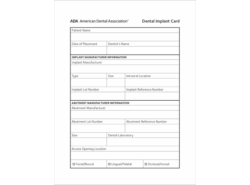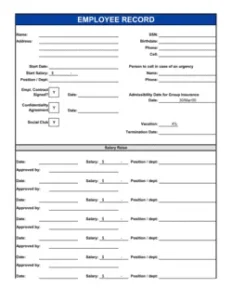Ever felt like you’re wandering in the digital wilderness, blindly searching for answers without a map? That’s what crafting a search strategy without proper documentation feels like. You might stumble upon some valuable insights, but you’re likely missing out on a structured approach that could yield far better results, and more efficiently. Think of a search strategy documentation template as your trusty compass and map, guiding you through the complexities of search engine optimization (SEO) and helping you chart a course to success.

This document isn’t just some fancy file to check off your list. It’s a living, breathing guide that evolves alongside your website and the ever-changing search landscape. It outlines your goals, identifies your target audience, analyzes your competition, and details the tactics you’ll employ to achieve your desired rankings. By creating a clear and concise roadmap, you’ll ensure that everyone involved, from your content creators to your developers, is on the same page and working towards a common objective.
In this article, we’ll delve into the essential elements of a comprehensive search strategy documentation template. We’ll explore why it’s crucial for your SEO efforts, what key components it should include, and how to use it effectively to drive organic traffic and improve your online visibility. Get ready to ditch the guesswork and embrace a data-driven approach to search engine optimization.
Why You Need a Search Strategy Documentation Template
A well-defined search strategy documentation template serves as the foundation for all your SEO initiatives. It acts as a central repository of information, ensuring consistency and clarity throughout your team. Without a documented strategy, SEO efforts can become fragmented, leading to wasted time, resources, and missed opportunities. Imagine trying to build a house without blueprints. You might end up with something functional, but it’s unlikely to be structurally sound or meet your long-term needs. The same applies to SEO. A robust search strategy documentation template provides the blueprint for building a successful online presence.
One of the most significant benefits of using a search strategy documentation template is improved collaboration. By outlining roles, responsibilities, and timelines, it eliminates confusion and ensures that everyone is working towards the same goals. This is particularly important for larger teams or when working with external agencies. A clear strategy document ensures that all parties are aligned and understand their contributions to the overall SEO effort. Think of it as a shared language that facilitates seamless communication and teamwork.
Furthermore, a comprehensive template allows you to track your progress and measure your results effectively. By defining key performance indicators (KPIs) upfront, you can monitor your performance against your goals and identify areas that require improvement. This data-driven approach allows you to refine your strategy and optimize your efforts for maximum impact. It transforms your SEO efforts from a guessing game into a science, where decisions are based on evidence and analytics.
A good search strategy documentation template also facilitates knowledge sharing and onboarding. When new team members join, they can quickly get up to speed by reviewing the documented strategy. This reduces the learning curve and ensures that they can contribute effectively from day one. It also helps to maintain consistency in your SEO efforts over time, even as team members come and go. This is particularly valuable for organizations with high employee turnover.
Finally, a search strategy documentation template helps you to stay organized and focused. By breaking down your SEO efforts into smaller, manageable tasks, it prevents you from feeling overwhelmed. It also helps you to prioritize your efforts and focus on the activities that will have the greatest impact. This is particularly important in today’s fast-paced digital landscape, where it’s easy to get distracted by the latest trends and technologies. A well-defined strategy keeps you grounded and focused on your core objectives.
Key Components of a Search Strategy Documentation Template
Now that we’ve established the importance of a search strategy documentation template, let’s explore the key components that it should include. A comprehensive template should cover all aspects of your SEO efforts, from keyword research to link building.
Executive Summary: This provides a brief overview of your search strategy, including your goals, target audience, and key performance indicators (KPIs). It should be concise and easy to understand, providing a high-level summary of your overall approach. This is the first thing stakeholders will read, so make it impactful.
Target Audience Analysis: This section delves into your ideal customer, including their demographics, interests, and online behavior. Understanding your target audience is crucial for creating content that resonates with them and attracting the right visitors to your website. Consider what problems they are trying to solve and how your website can help.
Keyword Research: This is the backbone of your SEO strategy. It involves identifying the keywords and phrases that your target audience uses to search for information online. Your keyword research should be comprehensive, covering both short-tail and long-tail keywords, as well as related terms and phrases. Use tools like Google Keyword Planner, Ahrefs, or SEMrush to identify relevant keywords with high search volume and low competition.
Competitive Analysis: This section examines your competitors’ SEO strategies, including their keyword rankings, backlink profiles, and content marketing efforts. Understanding your competition is crucial for identifying opportunities to outperform them and gain a competitive advantage. Analyze their strengths and weaknesses, and identify areas where you can differentiate yourself.
On-Page Optimization: This includes optimizing your website’s content, meta descriptions, title tags, and other on-page elements to improve its search engine visibility. Ensure that your website is mobile-friendly, loads quickly, and has a clear and intuitive navigation. Use your target keywords strategically throughout your content, but avoid keyword stuffing.
Off-Page Optimization: This involves building high-quality backlinks from reputable websites to improve your website’s authority and rankings. Focus on earning backlinks through valuable content, guest blogging, and outreach. Avoid buying backlinks, as this can result in penalties from search engines.
Content Strategy: This outlines your plan for creating and distributing valuable content that attracts and engages your target audience. Your content strategy should be aligned with your keyword research and target audience analysis. Create a content calendar to plan your content creation efforts and ensure a consistent flow of new content.
Technical SEO: This focuses on improving your website’s technical infrastructure to make it easier for search engines to crawl and index your content. This includes optimizing your website’s sitemap, robots.txt file, and site speed. Ensure that your website is free of errors and that all pages are accessible to search engines.
Measurement and Reporting: This section defines your key performance indicators (KPIs) and outlines how you will track your progress and measure your results. Use tools like Google Analytics and Google Search Console to monitor your website’s performance and identify areas for improvement. Regularly report on your progress to stakeholders and make adjustments to your strategy as needed.
By documenting these key components in your search strategy documentation template, you’ll have a solid foundation for your SEO efforts and be well on your way to achieving your desired rankings.
Remember to be flexible and adapt your approach as needed. The search landscape is constantly evolving, so it’s important to stay up-to-date on the latest trends and best practices. Regularly review and update your search strategy documentation template to ensure that it remains relevant and effective.
With a well-crafted search strategy documentation template in hand, you’re setting yourself up for success in the competitive world of online search. It’s your roadmap to achieving your SEO goals, driving organic traffic, and ultimately, growing your business.


